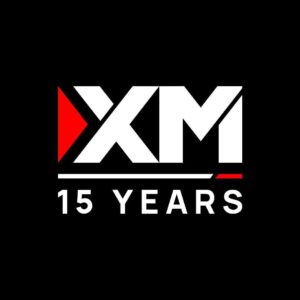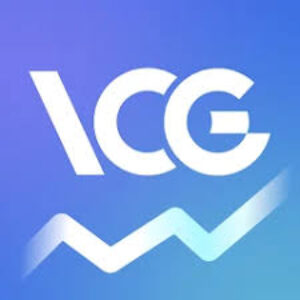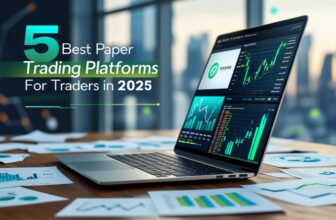
Learning how to get into quant trading can seem daunting, but with the right guidance, you can master this lucrative field. As a quantitative trading tutorial designed specifically for beginners, this comprehensive guide breaks down the essential steps, skills, and knowledge needed to become a successful quantitative trader.
Whether you’re a mathematics graduate exploring career options or a finance professional looking to transition into algorithmic trading, this guide provides a structured pathway into the world of quantitative trading. You’ll learn about the educational requirements, programming skills, and practical experience needed to excel in this dynamic field.
Our quantitative trading course material covers everything from basic concepts to advanced strategies, helping you understand how to become a quantitative trader in today’s competitive market. With insights from industry experts and practical examples, you’ll gain a clear understanding of what it takes to succeed in quant trading.
Key Takeaways
Essential Requirements to Get Into Quant Trading:
- Educational Foundation: A strong background in mathematics, computer science, or financial engineering is crucial for becoming a quantitative trader
- Technical Expertise: Proficiency in Python, C++, and statistical analysis tools is fundamental for developing trading algorithms
- Market Knowledge: Understanding both traditional finance and modern quantitative trading strategies is essential
Skills Development Path:
- Start with a comprehensive quantitative trading course to build foundational knowledge
- Practice with quantitative trading tutorials and hands-on projects
- Develop expertise in algorithmic trading systems and risk management
- Master statistical modeling and machine learning techniques
Career Progression:
- Begin with internships or junior quantitative trader positions
- Build a portfolio of tested trading strategies
- Network within the quantitative trading community
- Consider advanced certifications or a master’s degree for career advancement
Success Factors:
- Continuous learning and adaptation to market changes
- Strong mathematical and programming foundations
- Experience with real-world trading scenarios
- Understanding of risk management principles
How to Get Into Quant Trading: Essential Steps
Getting started in quantitative trading can seem overwhelming at first. As a field that combines advanced mathematics, computer science, and financial expertise, it requires dedication and a structured approach to learning. This quantitative trading tutorial will break down the essential components you need to master to begin your journey.
Understanding the Fundamentals
At its core, quantitative trading is about using mathematical models and computational power to identify and execute trading opportunities. Unlike traditional trading, where decisions might be based on intuitive market understanding or fundamental analysis, quant trading relies heavily on statistical analysis and algorithmic execution.
To become a quantitative trader, you’ll need to build a strong foundation in three key areas: mathematics, programming, and financial markets. The mathematical component includes advanced statistics, probability theory, and calculus – tools that will help you develop and validate trading strategies. On the programming side, languages like Python and C++ are essential for implementing these strategies and building trading systems.
Building Your Expertise
The path to becoming a successful quant trader typically begins with formal education. Most professionals in this field hold at least a bachelor’s degree in mathematics, computer science, or physics. However, your learning journey shouldn’t stop there. The most successful quantitative traders combine their academic knowledge with practical experience and continuous learning.
One effective way to build expertise is through specialized quantitative trading courses. These programs often provide hands-on experience with real market data and trading scenarios. They can help bridge the gap between theoretical knowledge and practical application, teaching you how to:
- Develop and backtest trading strategies
- Implement risk management systems
- Work with financial data and APIs
- Understand market microstructure
Gaining Practical Experience
Theory alone isn’t enough to succeed in quantitative trading. Practical experience is crucial, and there are several ways to gain it. Many aspiring quant traders start with paper trading – practicing with simulated accounts before risking real capital. This allows you to test your strategies and learn from mistakes without financial consequences.
Internships at trading firms can provide invaluable exposure to real-world trading environments. These opportunities often lead to full-time positions and help you build professional networks in the industry. While competitive, these positions offer direct experience with professional trading systems and mentorship from experienced quantitative traders.
Career Progression and Advancement
The career path in quantitative trading isn’t linear, and there are multiple routes to success. Some professionals start in research roles, developing and testing trading strategies before moving into trading positions. Others begin in technology roles, building trading systems before transitioning to strategy development.
Professional development should be ongoing throughout your career. Markets evolve constantly, and successful quant traders stay ahead by:
- Attending industry conferences and workshops
- Participating in trading competitions
- Building personal trading projects
- Networking with other professionals in the field
Remember that becoming a quantitative trader is a journey that requires patience and persistence. Focus on building strong foundations in mathematics and programming while gradually gaining practical experience. With dedication and the right approach, you can develop the skills needed to succeed in this challenging but rewarding field.
The Academic Foundation for Quantitative Trading Success

The journey to become a quantitative trader often starts in the classroom. While there’s no single “right” path, a strong academic foundation can significantly accelerate your career progression in this field. Understanding the educational requirements and options available will help you make informed decisions about your academic journey.
Choosing Your Educational Path
Most successful quantitative traders start with a bachelor’s degree in a quantitative field. Mathematics, physics, computer science, and engineering are popular choices, as they develop the analytical thinking and problem-solving skills essential for quant trading. During your undergraduate studies, focus on courses that cover statistical analysis, probability theory, and programming fundamentals.
What sets quantitative trading apart from traditional trading is its heavy reliance on mathematical models and computational methods. This is why many aspiring quant traders also pursue advanced degrees. A master’s in financial engineering or computational finance can provide specialized knowledge directly applicable to trading strategies and risk management.
Beyond Traditional Degrees
While formal education is important, the quantitative trading landscape is constantly evolving. Many successful traders complement their academic degrees with specialized quantitative trading courses and certifications. These programs often provide practical applications of theoretical concepts and exposure to real-world trading scenarios.
Professional certifications like the Certificate in Quantitative Finance (CQF) or the Financial Risk Manager (FRM) designation can add credibility to your profile. These credentials demonstrate your commitment to the field and provide structured learning paths for specific aspects of quantitative trading.
Building Research Skills
Academic research forms the backbone of many quantitative trading strategies. Learning to read and analyze academic papers is crucial, as many successful trading strategies originated in academic research before being implemented in practice. This skill helps you:
- Identify emerging trading opportunities
- Understand the theoretical foundations of different strategies
- Stay current with new developments in the field
- Develop innovative approaches to trading problems
Practical Application During Studies
The most effective academic programs combine theoretical knowledge with hands-on experience. During your studies, seek opportunities to:
- Participate in trading simulations and competitions
- Develop sample trading algorithms as course projects
- Join quantitative finance clubs or research groups
- Complete internships at trading firms or financial institutions
Advanced Academic Considerations
For those considering the highest levels of quantitative trading, a Ph.D. in a relevant field can open unique opportunities. Doctoral studies can provide:
- Deep expertise in specific areas of quantitative analysis
- Original research opportunities in trading strategies
- Strong theoretical foundation for complex modeling
- Network connections with academic and industry leaders
However, a Ph.D. isn’t necessary for success in quantitative trading. Many successful quant traders have bachelor’s or master’s degrees combined with strong practical experience.
Continuous Learning Environment
The academic journey doesn’t end with formal education. The field of quantitative trading evolves rapidly, requiring continuous learning and adaptation. Successful traders often:
- Attend advanced quantitative trading courses regularly
- Participate in industry conferences and workshops
- Follow academic publications in relevant fields
- Engage with online learning platforms and communities
Remember, while academic credentials are important, they’re just one component of becoming a successful quantitative trader. The key is to combine strong theoretical knowledge with practical skills and real-world experience. Focus on building a solid foundation in mathematics and programming while actively seeking opportunities to apply what you’ve learned in real trading scenarios.
Mastering the Technical Tools for Quantitative Trading
The technical foundation of quantitative trading requires proficiency in various programming languages, tools, and platforms. While the learning curve might seem steep, a structured approach to mastering these tools will accelerate your journey to becoming a quantitative trader.

Essential Programming Languages
Your success in quantitative trading heavily depends on your programming capabilities. Each language serves specific purposes in the trading ecosystem:
| Language | Primary Use Cases | Difficulty Level | Key Libraries |
|---|---|---|---|
| Python | Strategy development, backtesting, data analysis | Beginner-friendly | NumPy, Pandas, scikit-learn |
| C++ | High-frequency trading, system optimization | Advanced | Boost, STL, QuickFix |
| R | Statistical analysis, research | Intermediate | quantmod, xts, TTR |
| SQL | Database management, data extraction | Beginner-friendly | – |
Start with Python as your first language, as it offers the best balance of ease of learning and practical utility. Many quantitative trading tutorials and courses use Python for demonstrations and exercises.
Development Environments and Tools
A well-configured development environment is crucial for efficient strategy development and testing. Here are the essential tools you’ll need:
- Code Editors and IDEs:
- PyCharm for Python development
- Visual Studio for C++ programming
- RStudio for statistical analysis
- Version Control:
- Git for code management
- GitHub for collaboration and portfolio building
Data Analysis and Backtesting Platforms
Successful quantitative trading relies heavily on data analysis and strategy validation. These platforms are industry standards:
| Platform | Best For | Key Features | Cost Range |
|---|---|---|---|
| QuantConnect | Strategy development and backtesting | Cloud-based, multiple asset classes | Free – $249/month |
| MetaTrader 5 | Forex and CFD trading | Custom indicators, automated trading | Free – Broker dependent |
| Interactive Brokers TWS | Live trading and paper trading | Comprehensive API, multiple markets | Commission-based |
Building Your Technical Stack
The journey to mastering these tools should follow a logical progression:
- Foundation Phase
Start with Python programming and basic data analysis. Focus on understanding:- Basic programming concepts
- Data structures and algorithms
- Statistical analysis fundamentals
- Version control basics
- Intermediate Phase
Expand your skillset to include:- Advanced Python libraries for financial analysis
- Basic C++ programming
- SQL database management
- API integration techniques
- Advanced Phase
Master specialized tools and concepts:- High-frequency trading systems
- Machine learning applications
- Advanced optimization techniques
- Real-time data processing
Real-World Application
Theory must be combined with practical application. Here’s how to gain hands-on experience:
- Build a Personal Trading Framework
- Start with simple strategies
- Implement basic risk management
- Add complexity gradually
- Document your progress
- Practice with Market Data
- Use free data sources initially
- Implement proper data cleaning
- Test with different timeframes
- Validate results thoroughly
Performance Optimization Tools
| Tool Type | Examples | Use Cases | Priority Level |
|---|---|---|---|
| Profilers | cProfile, line_profiler | Code optimization | High |
| Memory Analyzers | memory_profiler, Valgrind | Memory management | Medium |
| Code Quality | PyLint, ClangFormat | Code maintenance | Medium |
| Testing Tools | PyTest, Google Test | Strategy validation | High |
Remember, mastering these tools is an ongoing process. Focus on building a strong foundation in one area before moving to the next. Regular practice and application in real-world scenarios will help cement your understanding and improve your proficiency.
Quantitative trading strategies are the foundation of successful trading in the financial markets. – Jane Smith, Quantitative Trader
Building and Implementing Quantitative Trading Strategies
Developing effective trading strategies is at the heart of quantitative trading. While the mathematical models and programming skills are crucial, success ultimately depends on your ability to create, test, and implement profitable trading strategies.
Understanding Strategy Types
Different quantitative trading strategies suit different market conditions and trading objectives. Here’s an overview of the main categories:
| Strategy Type | Description | Typical Timeframe | Complexity Level |
|---|---|---|---|
| Mean Reversion | Profits from price returns to average | Minutes to Days | Intermediate |
| Momentum | Follows trending markets | Hours to Weeks | Beginner |
| Statistical Arbitrage | Exploits price differentials | Seconds to Minutes | Advanced |
| Market Making | Profits from bid-ask spread | Milliseconds | Very Advanced |
Strategy Development Process
Creating a robust quantitative trading strategy involves several key steps:
- Research and Ideation
The process begins with thorough market research and hypothesis formation. Consider:- Historical market patterns
- Academic research findings
- Market inefficiencies
- Risk factors and constraints
- Strategy Design
Transform your research into a concrete trading approach:- Define clear entry and exit rules
- Establish position sizing guidelines
- Set risk management parameters
- Document assumptions and limitations
Backtesting Framework
Proper strategy validation requires rigorous backtesting. Here’s a structured approach:
| Testing Phase | Key Metrics | Common Pitfalls | Solutions |
|---|---|---|---|
| Initial Testing | Sharpe Ratio, Returns | Overfitting | Use out-of-sample data |
| Optimization | Maximum Drawdown, Win Rate | Look-ahead bias | Implement proper time series analysis |
| Validation | Transaction Costs, Slippage | Survivorship bias | Use point-in-time databases |
Risk Management Implementation
Every successful quantitative trading strategy needs robust risk management:
- Position-Level Risk Controls
- Stop-loss levels
- Position sizing rules
- Exposure limits
- Correlation constraints
- Portfolio-Level Risk Management
- Diversification metrics
- Value at Risk (VaR)
- Stress testing scenarios
- Correlation analysis
Strategy Performance Metrics
Monitor these key performance indicators:
| Metric Category | Key Measures | Target Range | Importance |
|---|---|---|---|
| Returns | Sharpe Ratio, CAGR | >1.5, >15% | High |
| Risk | Maximum Drawdown, VaR | <25%, <2% | Critical |
| Efficiency | Win Rate, Profit Factor | >55%, >1.5 | Medium |
| Cost | Transaction Cost Ratio | <10% of profits | High |
Common Strategy Challenges
Understanding potential pitfalls helps in developing more robust strategies:
- Market Impact
Large orders can move prices against you. Solutions include:
- Smart order routing
- Order splitting algorithms
- Careful position sizing
- Liquidity analysis
- Technical Challenges
Infrastructure issues can affect strategy performance:
- Latency management
- Data quality control
- System reliability
- Execution speed
- Adapting to Market Changes
Markets evolve constantly, requiring:
- Regular strategy review
- Parameter optimization
- Adaptable algorithms
- Continuous monitoring
Implementation Timeline
A typical strategy implementation process follows this timeline:
| Phase | Duration | Key Activities | Success Criteria |
|---|---|---|---|
| Research | 2-4 weeks | Literature review, data analysis | Clear hypothesis |
| Development | 4-8 weeks | Coding, initial testing | Working prototype |
| Testing | 2-4 weeks | Backtesting, optimization | Meeting performance targets |
| Paper Trading | 1-3 months | Live testing without real money | Consistent results |
| Live Trading | Ongoing | Real money deployment | Achieving target returns |
Remember that successful strategy implementation requires patience and rigorous testing. Start with simpler strategies and gradually increase complexity as you gain experience and confidence in your approach.
Career Paths and Essential Skills in Quantitative Trading
Breaking into quantitative trading requires a strategic approach to skill development and career planning. Whether you’re a recent graduate or a mid-career professional, understanding the various career paths and required skills will help you navigate your way into this competitive field. The journey to become a quantitative trader can be challenging, but with the right preparation and mindset, it’s an achievable goal.
Career Progression Paths
The path to becoming a quantitative trader offers several entry points, each with its own timeline and requirements. Some professionals enter directly from graduate programs, while others transition from technical or financial backgrounds. Your chosen path will largely depend on your existing skills and experience level.
| Entry Point | Timeline | Key Requirements | Typical First Role |
|---|---|---|---|
| Graduate Track | 0-2 years | Bachelor’s in quantitative field | Junior Quant Analyst |
| Technical Track | 2-4 years | Programming background | Quant Developer |
| Research Track | 3-5 years | Advanced degree/PhD | Quant Researcher |
| Finance Track | 2-3 years | Trading experience | Assistant Quant Trader |
Salary Expectations and Growth
Compensation in quantitative trading can be highly rewarding, though it varies significantly based on experience and performance. Entry-level positions typically offer competitive base salaries with bonus potential, while senior roles can command substantial compensation packages. The key to advancing through these compensation tiers lies in demonstrating consistent performance and developing expertise in specific areas of quantitative trading.
| Position Level | Base Salary Range | Bonus Range | Experience Required |
|---|---|---|---|
| Entry Level | $80,000-$120,000 | 0-50% | 0-2 years |
| Mid-Level | $120,000-$200,000 | 50-150% | 3-5 years |
| Senior Level | $200,000-$400,000 | 100-300% | 5+ years |
| Portfolio Manager | $300,000+ | Performance-based | 8+ years |
Essential Skills Matrix
Success in quantitative trading demands mastery across multiple domains. Technical skills form the foundation, with advanced mathematics and programming being crucial components. A quantitative trader must possess strong analytical abilities and be comfortable working with complex algorithms and data structures. Beyond technical expertise, a deep understanding of financial markets and trading mechanics is essential.
| Skill Category | Beginning Phase | Intermediate Phase | Advanced Phase |
|---|---|---|---|
| Technical | Basic programming, Statistics | Algorithm development, Data analysis | Machine learning, Advanced optimization |
| Financial | Market basics, Simple strategies | Portfolio theory, Risk metrics | Complex derivatives, Advanced strategies |
| Business | Industry awareness, Communication | Project management, Team collaboration | Strategy presentation, Stakeholder management |
Building Your Professional Profile
Developing a strong professional profile requires a multi-faceted approach. Educational credentials serve as the foundation, with relevant degrees in quantitative fields being highly valued. Professional certifications like the CQF or FRM can further enhance your credibility. However, theoretical knowledge alone isn’t sufficient. Practical experience through internships, personal trading projects, and open-source contributions can significantly strengthen your profile.
Career Challenges and Success Factors
The path to becoming a successful quantitative trader comes with its share of challenges. The competitive nature of the industry means that standing out requires more than just technical skills. Successful traders combine technical excellence with strong market understanding and personal attributes like mental resilience and emotional discipline.
| Challenge | Impact | Mitigation Strategy |
|---|---|---|
| High Competition | Limited entry positions | Develop unique skill combinations |
| Technical Complexity | Steep learning curve | Structured learning approach |
| Market Pressure | Performance stress | Build resilience through practice |
| Rapid Evolution | Constant upskilling needed | Commit to continuous learning |
Professional Development
Continuous learning and adaptation are crucial in the ever-evolving field of quantitative trading. Successful professionals constantly update their skills, staying current with market trends and new programming techniques. They actively expand their knowledge across different asset classes and maintain strong professional networks. This commitment to ongoing development helps ensure long-term success in the field.
The journey to becoming a successful quantitative trader requires patience, dedication, and a strategic approach to skill development. Those who succeed typically combine strong technical capabilities with deep market understanding and excellent personal qualities. While the path can be challenging, the rewards – both intellectual and financial – make it an attractive career choice for those with the right aptitude and determination.
Strategy Identification in Quantitative Trading
Strategy identification forms the cornerstone of successful quantitative trading. While many aspiring traders focus primarily on technical skills, the ability to identify and develop effective trading strategies often determines long-term success. This process requires a systematic approach combining market knowledge, statistical analysis, and creative thinking.
Understanding Strategy Categories
The quantitative trading landscape encompasses various strategy types, each suited to different market conditions and trading objectives. Mean reversion strategies capitalize on price movements returning to historical averages, while momentum strategies exploit continuing price trends. Statistical arbitrage seeks to profit from price discrepancies between related instruments.
| Strategy Type | Key Characteristics | Market Conditions | Time Horizon |
|---|---|---|---|
| Mean Reversion | Price deviation from average | Ranging markets | Minutes to days |
| Momentum | Trend following | Trending markets | Hours to weeks |
| Statistical Arbitrage | Price relationship analysis | Any market condition | Seconds to days |
| Market Making | Spread capture | High liquidity | Milliseconds |
Research and Discovery Process
Finding profitable trading strategies requires a methodical research approach. Academic journals, financial papers, and industry publications often provide the theoretical foundation for strategy development. However, the real challenge lies in transforming theoretical concepts into practical trading strategies.
The research process typically involves analyzing market inefficiencies, behavioral patterns, and structural advantages. Modern quantitative traders increasingly utilize alternative data sources and machine learning techniques to uncover new trading opportunities. This combination of traditional financial theory and cutting-edge technology often yields the most promising results.
| Research Source | Benefits | Limitations | Best Used For |
|---|---|---|---|
| Academic Papers | Theoretical foundation | Implementation gap | Strategy concepts |
| Industry Reports | Market insights | Time lag | Trend analysis |
| Alternative Data | Unique insights | Data quality issues | Alpha generation |
| Market Analysis | Real-time feedback | Noise sensitivity | Strategy validation |
Strategy Evaluation Framework
The evaluation of potential trading strategies requires careful consideration of multiple factors. Successful quantitative traders develop a systematic framework for assessing strategy viability:
| Evaluation Criterion | Key Metrics | Importance | Considerations |
|---|---|---|---|
| Profitability | Sharpe Ratio, Returns | Critical | Risk-adjusted returns |
| Capacity | Market Impact, Liquidity | High | Strategy scalability |
| Robustness | Out-of-sample performance | Essential | Strategy stability |
| Implementation | Technical feasibility | High | Resource requirements |
Market Microstructure Considerations
Understanding market microstructure proves crucial for strategy development. Different markets and instruments exhibit unique characteristics that affect strategy performance. Successful traders adapt their approaches based on market-specific factors such as liquidity patterns, trading hours, and regulatory constraints.
Market microstructure analysis helps identify structural advantages and potential pitfalls. For instance, certain strategies may work well in highly liquid markets but fail in less liquid ones. Similarly, some approaches might be profitable during regular trading hours but struggle during off-peak periods.
| Market Aspect | Impact on Strategy | Adaptation Required |
|---|---|---|
| Liquidity | Execution costs | Position sizing |
| Trading Hours | Strategy timing | Operating windows |
| Regulations | Trading constraints | Compliance measures |
| Market Making | Spread dynamics | Quote management |
Strategy Innovation and Adaptation
The evolving nature of financial markets requires continuous strategy innovation. Successful quantitative traders regularly review and adapt their strategies to changing market conditions. This process involves monitoring strategy performance, identifying deteriorating returns, and implementing necessary modifications.
Strategy adaptation might involve adjusting parameters, incorporating new data sources, or developing hybrid approaches that combine multiple strategies. The key lies in maintaining flexibility while preserving the core elements that drive strategy profitability.
Risk Consideration in Strategy Selection
Risk assessment plays a vital role in strategy selection. Different strategies expose traders to various types of risks, from market risk to operational risk. Understanding and managing these risks becomes crucial for long-term success.
| Risk Type | Strategy Impact | Mitigation Approach |
|---|---|---|
| Market Risk | P&L volatility | Position limits |
| Model Risk | Strategy failure | Robust testing |
| Operational Risk | Execution issues | System redundancy |
| Liquidity Risk | Trading costs | Smart execution |
The process of strategy identification never truly ends in quantitative trading. Successful traders maintain a pipeline of strategy research and development, constantly seeking new opportunities while optimizing existing approaches. This continuous cycle of innovation and refinement helps ensure sustained performance in evolving market conditions.
Backtesting and Strategy Validation in Quantitative Trading
Backtesting serves as the crucial bridge between strategy development and live trading. While a strategy might appear promising in theory, comprehensive backtesting helps validate its effectiveness and identify potential pitfalls. This systematic approach to strategy validation forms an essential component of the quantitative trading process.
The Backtesting Framework
A robust backtesting framework combines historical data analysis with realistic trading assumptions. The process involves more than simply running historical price data through a trading algorithm. Successful backtesting must account for transaction costs, market impact, and various real-world constraints that affect trading performance.
| Component | Purpose | Key Considerations | Implementation |
|---|---|---|---|
| Data Management | Historical price feeds | Data quality, coverage | Clean, adjust data |
| Execution Engine | Trade simulation | Market impact, slippage | Model realistic fills |
| Risk Management | Position monitoring | Exposure limits, stops | Implement constraints |
| Performance Analytics | Results analysis | Multiple metrics | Calculate statistics |
Data Quality and Preparation
The foundation of effective backtesting lies in high-quality data. Market data must be cleaned, normalized, and adjusted for corporate actions. This preparation phase often proves more time-consuming than the actual strategy testing, yet its importance cannot be overstated.
| Data Issue | Impact | Resolution Method | Priority |
|---|---|---|---|
| Survivorship Bias | Overoptimistic results | Use point-in-time data | Critical |
| Look-Ahead Bias | Unrealistic performance | Proper data alignment | Critical |
| Corporate Actions | Incorrect price history | Apply adjustments | High |
| Missing Data | Incomplete analysis | Data interpolation | Medium |
Performance Metrics and Evaluation
Comprehensive strategy evaluation requires analyzing multiple performance metrics. While returns often receive the most attention, factors like risk-adjusted performance, drawdown characteristics, and strategy capacity provide crucial insights into strategy viability.
Traditional metrics like the Sharpe ratio offer important insights but should be supplemented with more sophisticated analyses. Modern quantitative traders often employ machine learning techniques to identify complex patterns in strategy performance and potential breakdown points.
| Metric Category | Key Measures | Target Range | Importance |
|---|---|---|---|
| Returns | CAGR, Alpha | Strategy dependent | High |
| Risk Adjusted | Sharpe, Sortino | >1.5 | Critical |
| Drawdown | Max DD, Recovery | <20%, <6 months | High |
| Stability | Beta, Correlation | Strategy dependent | Medium |
Walk-Forward Analysis
Walk-forward testing provides a more realistic assessment of strategy performance than traditional backtesting alone. This approach involves testing the strategy on multiple time periods, helping identify whether performance remains consistent across different market conditions.
The process typically involves dividing historical data into multiple periods, optimizing strategy parameters on one period, and testing on subsequent periods. This approach helps prevent overfitting and provides more reliable performance estimates.
| Phase | Duration | Purpose | Key Metrics |
|---|---|---|---|
| In-Sample | 60-70% of data | Parameter optimization | Optimization metrics |
| Out-of-Sample | 30-40% of data | Performance validation | Validation metrics |
| Forward Testing | Recent period | Final verification | Live simulation metrics |
Transaction Cost Analysis
Realistic transaction cost modeling proves essential for accurate backtesting. Various costs affect strategy performance, from explicit costs like commissions to implicit costs like market impact and slippage.
| Cost Type | Impact Level | Modeling Approach | Consideration |
|---|---|---|---|
| Commission | Direct | Fixed or percentage | Broker specific |
| Slippage | Variable | Price impact model | Volume dependent |
| Market Impact | Progressive | Non-linear scaling | Size dependent |
| Spread Cost | Immediate | Bid-ask modeling | Time varying |
Strategy Robustness Testing
Robust strategies maintain performance across various market conditions and parameter settings. Testing strategy robustness involves analyzing sensitivity to different market regimes, parameter changes, and execution assumptions.
Monte Carlo simulation often plays a crucial role in robustness testing, helping quantify the range of potential outcomes and identify potential failure modes. This analysis helps traders understand the strategy’s risk profile and set appropriate position sizing and risk limits.
| Test Type | Purpose | Method | Key Indicators |
|---|---|---|---|
| Sensitivity | Parameter stability | Grid search | Performance variance |
| Regime Testing | Market adaptability | Condition sampling | Regime dependency |
| Monte Carlo | Outcome distribution | Random simulation | Confidence intervals |
| Stress Testing | Risk assessment | Extreme scenarios | Worst-case losses |
The backtesting process represents an ongoing cycle of refinement and validation. Successful quantitative traders regularly review and update their backtesting frameworks, incorporating new techniques and addressing identified limitations. This commitment to robust testing helps ensure strategy reliability and sustainable performance in live trading.
Execution Systems in Quantitative Trading
The execution system represents the critical link between strategy and market interaction in quantitative trading. While developing profitable strategies is essential, their success ultimately depends on efficient and reliable execution. Modern execution systems combine sophisticated technology with careful risk management to optimize trading performance.
Components of Execution Infrastructure
A comprehensive execution system consists of multiple interconnected components. At its core lies the order management system (OMS), which handles trade generation and routing. This integrates with risk management modules, market data feeds, and various execution algorithms to create a complete trading infrastructure.
| Component | Primary Function | Critical Features | Integration Points |
|---|---|---|---|
| Order Management | Trade handling | Order routing, tracking | Risk systems, algos |
| Risk Controls | Exposure management | Position monitoring | Strategy engine, OMS |
| Market Data | Price/quote feeds | Real-time updates | Trading algorithms |
| Execution Algos | Order execution | Smart routing, timing | OMS, market access |
Trading Latency Management
In modern markets, execution speed can significantly impact trading performance. Successful quantitative trading operations carefully manage latency across their entire infrastructure. This involves optimizing everything from network connections to code efficiency.
Network latency often represents the most significant factor in execution speed. Co-location services, direct market access (DMA), and specialized network hardware help minimize transmission delays. However, the benefit of reduced latency must be weighed against the associated costs.
| Latency Type | Typical Range | Optimization Method | Cost Impact |
|---|---|---|---|
| Network | 0.1-10ms | Co-location, DMA | Very High |
| Processing | 0.01-1ms | Code optimization | Medium |
| Database | 0.1-5ms | In-memory storage | High |
| Market Data | 1-20ms | Direct feeds | High |
Smart Order Routing and Algorithms
Execution algorithms play an increasingly important role in modern trading. These algorithms optimize order execution by considering factors like market impact, timing, and venue selection. Different types of algorithms suit different trading strategies and market conditions.
| Algorithm Type | Best Used For | Key Benefits | Limitations |
|---|---|---|---|
| VWAP | Large orders | Reduced impact | Time constraint |
| TWAP | Schedule based | Predictable execution | Market risk |
| Dark Pool | Hidden liquidity | Minimal signaling | Fill uncertainty |
| Smart Router | Best execution | Price improvement | Complexity |
Risk Management Integration
Effective risk management requires tight integration with the execution system. Real-time position monitoring, exposure calculations, and automated circuit breakers help prevent catastrophic losses. The risk management system must process updates quickly enough to prevent unauthorized trading while not introducing significant latency.
| Risk Control | Implementation | Response Time | Coverage |
|---|---|---|---|
| Pre-Trade | Order validation | Microseconds | All orders |
| Real-Time | Position monitoring | Milliseconds | Active positions |
| Post-Trade | Reconciliation | Minutes | Completed trades |
| System | Infrastructure monitoring | Seconds | All systems |
Market Connectivity and Data Feeds
Reliable market connectivity forms the foundation of any execution system. Modern trading operations typically maintain multiple connections to exchanges and data providers for redundancy. Market data quality and timeliness directly impact trading performance.
The architecture of market connectivity must balance reliability with speed. While direct exchange connections offer the lowest latency, they also require significant infrastructure investment. Market data aggregators provide a more cost-effective solution for many trading operations.
| Connection Type | Latency | Reliability | Cost Level |
|---|---|---|---|
| Direct Exchange | Lowest | High | Highest |
| Prime Broker | Medium | Very High | High |
| Market Aggregator | Higher | Medium | Medium |
| API Access | Highest | Medium | Lower |
System Monitoring and Management
Continuous monitoring of execution system performance proves essential for maintaining reliable operations. This includes tracking system health metrics, order flow statistics, and execution quality measures. Sophisticated monitoring tools help identify potential issues before they impact trading performance.
| Monitoring Area | Key Metrics | Alert Threshold | Response Time |
|---|---|---|---|
| System Health | CPU, Memory, Network | 80% utilization | Minutes |
| Order Flow | Fill rates, Rejections | >5% rejection | Seconds |
| Execution Quality | Slippage, Impact | 2 std deviation | Minutes |
| Risk Metrics | Exposure, P&L | Limit breaches | Immediate |
Disaster Recovery and Redundancy
Robust execution systems require comprehensive disaster recovery capabilities. This includes redundant infrastructure, automated failover procedures, and regular testing of backup systems. The ability to quickly recover from system failures can prevent significant trading losses.
For most quantitative trading operations, the cost of system failure far exceeds the investment required for robust backup systems. Regular testing and updating of disaster recovery procedures helps ensure their effectiveness when needed.
The development and maintenance of execution systems represent an ongoing process of refinement and improvement. Successful quantitative trading operations continuously evaluate and upgrade their execution infrastructure to maintain competitive advantage in evolving markets.
Essential Qualifications and Skills for Quantitative Trading
The path to becoming a successful quantitative trader requires a unique combination of academic qualifications, technical skills, and practical experience. While there’s no single required background, certain qualifications and skills consistently prove valuable in this field. Understanding these requirements helps aspiring traders focus their educational and professional development efforts effectively.
Academic Qualifications
Academic credentials play a crucial role in quantitative trading careers. Most successful quant traders possess strong educational backgrounds in quantitative disciplines. The rigorous mathematical and analytical training provided by these programs forms the foundation for understanding complex trading strategies.
| Degree Level | Relevant Fields | Career Impact | Additional Benefits |
|---|---|---|---|
| Bachelor’s | Mathematics, Physics, Computer Science | Entry-level positions | Foundation knowledge |
| Master’s | Financial Engineering, Quantitative Finance | Mid-level roles | Specialized expertise |
| PhD | Mathematics, Statistics, Physics | Research roles | Advanced modeling skills |
Technical Skills Framework
Quantitative trading demands proficiency in multiple technical domains. Programming skills form the core of technical requirements, but mathematical and statistical knowledge proves equally important. The modern quant trader must also understand financial markets and risk management principles.
| Skill Category | Essential Elements | Application Areas | Development Priority |
|---|---|---|---|
| Programming | Python, C++, R | Strategy implementation | High |
| Mathematics | Statistics, Calculus, Linear Algebra | Model development | Critical |
| Financial | Market mechanics, Asset classes | Strategy design | High |
| Data Science | Machine learning, Data analysis | Alpha generation | Medium-High |
Professional Certifications
While not always mandatory, professional certifications can enhance credibility and demonstrate expertise in specific areas. These credentials often provide structured learning paths and industry recognition.
The effectiveness of certifications varies based on career goals and existing qualifications. Most successful traders view certifications as supplements to core academic credentials rather than replacements.
| Certification | Focus Area | Time Investment | Value Add |
|---|---|---|---|
| CQF | Quantitative finance | 6 months | High |
| FRM | Risk management | 12-18 months | Medium-High |
| CFA | Financial analysis | 18-36 months | Medium |
| Certificate in Python Programming | Technical skills | 3-6 months | Medium |
Experience Requirements
Practical experience proves invaluable in quantitative trading. Most successful traders build experience through internships, junior trading roles, or personal trading projects. The progression from theory to practice often reveals important insights not covered in academic programs.
Many quantitative trading firms offer structured training programs for new hires. These programs help bridge the gap between academic knowledge and practical trading skills. Experience requirements typically vary by role and firm:
| Role Level | Experience Needed | Key Skills Focus | Learning Curve |
|---|---|---|---|
| Junior | 0-2 years | Technical implementation | Steep |
| Mid-Level | 3-5 years | Strategy development | Moderate |
| Senior | 5+ years | Portfolio management | Ongoing |
Skill Development Pathway
The development of quantitative trading skills follows a natural progression. Beginning with fundamental mathematical and programming skills, traders gradually build expertise in more specialized areas. This progression often continues throughout one’s career as markets and technologies evolve.
Most successful quant traders develop expertise across multiple domains:
| Development Phase | Core Focus | Timeline | Milestone Goals |
|---|---|---|---|
| Foundation | Mathematics, Programming | 1-2 years | Basic system development |
| Intermediate | Strategy design, Backtesting | 2-3 years | Strategy implementation |
| Advanced | Portfolio management, Risk | 3+ years | Independent trading |
Continuous Learning Requirements
The dynamic nature of financial markets demands ongoing skill development. Successful quantitative traders regularly update their knowledge and skills to remain competitive. This includes staying current with:
| Area | Update Frequency | Learning Methods | Importance |
|---|---|---|---|
| Market Trends | Daily/Weekly | News, Research | High |
| Technical Skills | Monthly/Quarterly | Courses, Projects | Critical |
| Industry Changes | Quarterly | Conferences, Networks | Medium-High |
| New Technologies | Ongoing | Training, Practice | High |
Success in quantitative trading ultimately depends on combining strong academic foundations with practical skills and continuous learning. While the specific requirements may vary by role and firm, the commitment to ongoing development remains constant throughout a quantitative trading career.
Conclusion: Your Path to Quantitative Trading Success
Entering the field of quantitative trading represents a challenging yet rewarding career choice that combines advanced mathematics, programming expertise, and financial acumen. Success in this field requires a strategic approach to skill development and a commitment to continuous learning.
Key Success Factors
| Area | Critical Elements | Development Timeline | Impact Level |
|---|---|---|---|
| Education | Quantitative degree, Trading courses | 2-4 years | High |
| Technical Skills | Programming, Mathematics | 1-3 years | Critical |
| Market Knowledge | Strategy development, Risk management | Ongoing | High |
| Professional Network | Industry connections, Mentorship | Continuous | Medium-High |
Career Development Roadmap
The journey to become a quantitative trader typically progresses through several stages. Each stage builds upon previous experience and knowledge, creating a comprehensive foundation for success in this demanding field.
| Career Stage | Focus Areas | Duration | Key Milestones |
|---|---|---|---|
| Entry Level | Core skills development | 1-2 years | First trading system |
| Mid-Career | Strategy refinement | 2-4 years | Independent portfolio |
| Senior Level | Portfolio management | 5+ years | Team leadership |
Understanding this progression helps aspiring traders plan their career development effectively. The field of quantitative trading rewards those who combine technical expertise with practical trading experience and continuous learning.
Final Recommendations
To successfully enter and thrive in quantitative trading:
Start with a strong foundation in mathematics and programming. These fundamental skills form the backbone of successful quantitative trading strategies. Consider pursuing relevant quantitative trading courses and certifications to build your knowledge base systematically.
Focus on developing practical skills alongside theoretical knowledge. Build and test trading strategies, even if only in simulated environments initially. This hands-on experience proves invaluable when transitioning to professional trading roles.
Stay informed about market developments and technological advances. The field of quantitative trading evolves rapidly, with new techniques and technologies emerging regularly. Maintain a commitment to continuous learning and professional development throughout your career.
Remember that success in quantitative trading requires patience, dedication, and resilience. While the learning curve may be steep, the combination of intellectual challenge and potential rewards makes this career path particularly attractive for those with strong quantitative abilities and a passion for financial markets.
Your journey into quantitative trading starts with taking concrete steps toward building your skills and knowledge base. Whether through formal education, professional certifications, or practical experience, each step brings you closer to your goal of becoming a successful quantitative trader.

















